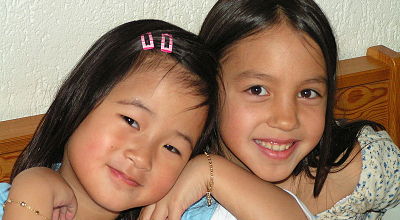Gay Marriage: Don’t Do It, for the Kids
Marriage has always been defined as a male-female union for two simple reasons: Society needs children, and a child needs a mom and a dad. Only the union of a man and a woman can naturally produce a child, and the marriage of a man and a woman is what is most likely to provide a child with a stable home shared with both the child’s mother and father.
In order to encourage, protect and regulate this most fundamental relationship of a mother, father and child, the state recognizes and supports marriage and defines it as the union of one man and one woman. Liberal activists are now asking the Supreme Court to unilaterally change this most basic definition of our most fundamental social institution. They would have us believe that the authors of our Constitution enshrined within it the right of a man to marry a man and a woman to marry a woman. The High Court should decline this invitation to engage in judicial overreach.
The push to redefine marriage began in earnest in the 1990s. California is one of 30 states where voters, in response to this movement (and to judicial activists who claimed a right to redefine marriage unilaterally), amended its state constitution to place the definition of marriage as the union of a man and a woman, beyond the reach of state judges or legislators. They did so in 2008 by passing Proposition 8.
The plaintiffs in Hollingsworth v. Perry are asking the court to overturn not only Proposition 8, but the marriage laws of all 41 states that still define marriage as a male-female union. Such a ruling would rightly be seen as a Roe v. Wade of marriage, imposing its redefinition on every state in the union.
Roe, the 1973 ruling that read into the Constitution a hidden right to abortion, was a colossal failure at settling a controversial social issue. Even liberal Justice Ruth Bader Ginsburg was quoted last year questioning the wisdom and timing of the sweeping Roe v. Wade decision.
The advocates of redefining marriage claim homosexuals are being denied their fundamental right to marry. However, the Supreme Court’s precedents defining that right have all done so in the context of marriage’s essential social role in producing future generations.
It is important not to confuse the private desires of any individual couple to marry with the public purposes which justify treating marriage as a public institution. The public purpose of marriage relates to procreation, not to sexual orientation.
The law is a teacher, and defining marriage as the union of a woman and a man teaches the unique importance of the only type of relationship that results in natural reproduction, while encouraging the raising of children by their mother and father.
To redefine marriage would change what marriage law teaches, sending to all of society the message that there is nothing uniquely important about relationships that can make babies, and nothing special about a child having both a mom and a dad. This will inevitably change behavior within society in ways that will devalue children and increase the number who grow up fatherless or motherless.
Redefining marriage would reorient the institution to the desires of adults, placing them ahead of the needs of children. This would be a tragic outcome. However, the decision, if it is made, should rest with the people, not nine unelected judges.
Peter Sprigg is a senior fellow for policy studies at the Family Research Council. This article appeared in U.S. News and World Report on March 26, 2013.














































